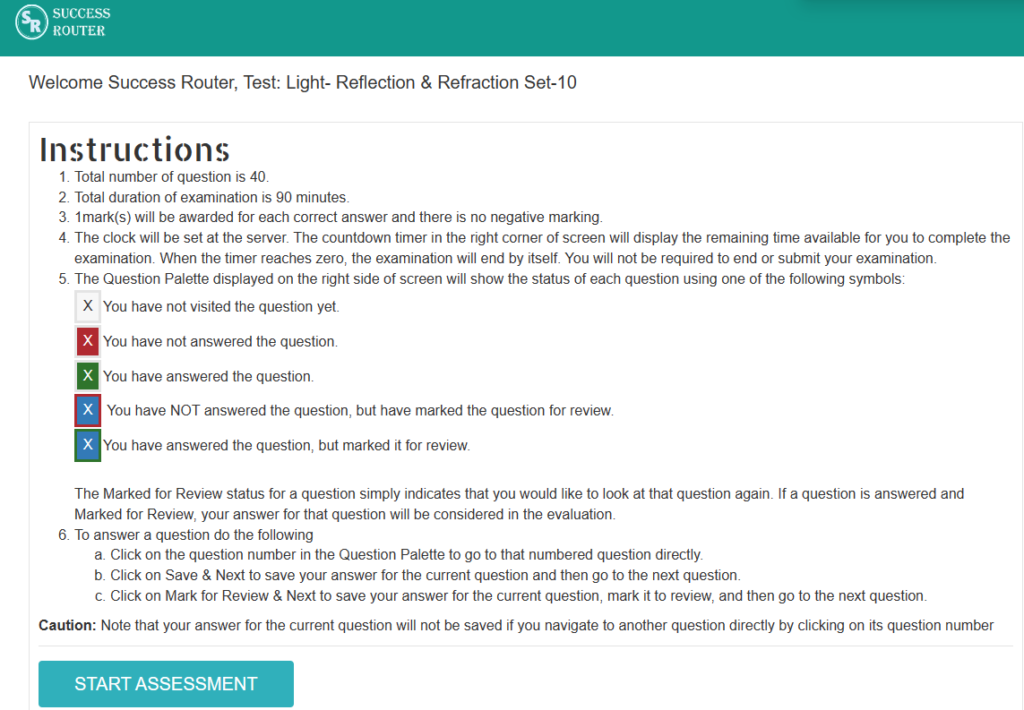Last Updated on May 15, 2025 by XAM CONTENT
Hello students, we are providing case study questions for class 9 science. Case study questions are the new question format that is introduced in CBSE board. The resources for case study questions are very less. So, to help students we have created chapterwise case study questions for class 9 science. In this article, you will find case study questions for cbse class 9 science chapter 12 Improvement in Food Resources.
| Chapter | Improvement in Food Resources |
| Type of Questions | Case Study Questions |
| Nature of Questions | Competency Based Questions |
| Board | CBSE |
| Class | 9 |
| Subject | Science |
| Theme | Food |
| Useful for | Class 9 Studying Students |
| Answers provided | Yes |
| Difficulty level | Mentioned |
| Important Link | Class 9 Science Chapterwise Case Study |
Case Study Questions on Improvement in Food Resources
Questions
Question 1:
The figure given below shows two crop fields (plot A and plot B) that have been treated by manures and chemical fertilizers respectively, keeping other environmental factors same. Answer the questions that follow:

Read the given passage carefully and give the answer of the following questions:
Q 1. Why does plot B show sudden increase and then gradual decrease in yield?
Q 2. Why is the highest peak in plot A graph slightly delayed?
Q 3. What is the reason for the different pattern of the two graphs?
Q 4. Name the nutrients which are supplied by green manure to the soil.
Q 5. How is the use of manure particularly useful for sandy soils?
Answers
- There is a sudden increase in yield due to the release of nutrients in high quality by chemical fertilizers. The gradual decrease may be due to continuous use of chemicals which decreases soil fertility.
- It shows that the manures supply nutrients to the soil at a slow rate.
- The different pattern of the two graphs indicates that the type of fertilizer (natural or chemical) used directly affects the quality and quantity of the crops and their yield.
- Nitrogen and phosphorus.
- Manure increases the water holding capacity in sandy soils.
Question 2:
There are two ways of obtaining fish for our food. One is from natural resources, which is called capture fishing. The other way is by fish farming, which is called culture fishery.
Fishery is further divided into inland fishery and marine fishery. In inland fishery, fishing is done in freshwater resources such as canals, ponds, etc., and brackish water resources such as lagoons. Marine fishery consist of fishing in sea water along the coastline and the deep seas beyond it. Some marine fishes of high economic values are mullets, bhetki, shellfish such as prawns and oysters.
Read the given passage carefully and give the answer of the following questions:
Q 1. Differentiate between capture fishing and culture fishery.
Q 2. Differentiate between inland fishery and marine fishery.
Q 3. Mention the names of some marine fish of high economic value.
Q 4. Give two examples of shellfishes.
Q 5. How does catla differ from mrigal?
Answers
1.
| Capture fishing | Culture fishery |
| It is a method of obtaining fishes from natural resources. | It is a method of obtaining fishes from fish farming. |
2. Inland fishery is the rearing of fish in freshwater and brackish water resources. Marine fishery is the rearing of fish in sea water.
3. Mullets, prawns, bhetki, etc.
4. Prawns and Molluscs.
5. Catla is a surface feeder while mrigal is a bottom feeder.

Also check
Case study questions for other chapters of class 9 science is given below.
- Structure of the Atom Class 9 Case Study Questions Science Chapter 4
- Atoms and Molecules Class 9 Case Study Questions Science Chapter 3
- Improvement in Food Resources Class 9 Case Study Questions Science Chapter 12
- Sound Class 9 Case Study Questions Science Chapter 11
- Work and Energy Class 9 Case Study Questions Science Chapter 10
- Gravitation Class 9 Case Study Questions Science Chapter 9
- Force and Laws of Motion Class 9 Case Study Questions Science Chapter 8
- Motion Class 9 Case Study Questions Science Chapter 7
- Tissues Class 9 Case Study Questions Science Chapter 6
- The Fundamental Unit of Life Class 9 Case Study Questions Science Chapter 5
- Is Matter Around Us Pure Class 9 Case Study Questions Science Chapter 2
- Matter in Our Surroundings Class 9 Case Study Questions Science Chapter 1
We hope the given case study questions for Improvement in Food Resources Class 9 helps you in your learning.
🚀 Boost Your Exam Prep: Get case study questions for all subjects (Class 6-12) now!
👉 Explore more resources on CBSE Class 9
Helpful Links for CBSE Class 9 Science Preparation
- Download Latest Sample Papers for CBSE Class 9 Science
- Download Worksheets for CBSE Class 9 Science
- Download Chapter Tests for CBSE Class 9 Science
- Download Case Study Question Bank for CBSE Class 9 Science
- Download Numerical Problems for CBSE Class 9 Physics
- Download Important MCQs for CBSE Class 9 Physics
Topics from which case study questions may be asked
- Plant and animal breeding and selection for quality improvement and management
- Use of fertilizers and manures
- Protection from pests and diseases
- Organic farming.
Food: It is an essential organic substance that supplies proteins, carbohydrates, fats, vitamins and minerals, all of which we require for body development, growth and health.
Sources of Food: Both plants and animals are the major sources of food which are obtained by agriculture and animal husbandry.
Need to Improve Food Resources: To meet the demands of growing population, there is a need to improve food resources. This led to green revolution and white revolution.
Green revolution has contributed to increased food grain production and white revolution has resulted in better and efficient availability of milk.
For further practice on case study questions related to Improvement in Food Resources Class 9 Science, we recommend exploring the link given below.
Quiz
| Topic | Improvement in Food Resources |
| Useful for | CBSE Class 9 Students |
| Type of Questions | MCQs |
| No. of Questions | 10 |
| Solutions | Instant Solutions after Completion of Quiz |
| Quiz Link | Click here to Take Test |
| Price | Free |
How to take quiz or test using the given link
It’s quite simple!
Step 1: Click on the given link. You will see the below screen.

Step 2: Fill in the necessary details. There is no need to register. Just fill your email and name and click on the button “Take Assessment”. The below screen will appear.

Step 3: Click on start assessment. Now you are ready to take test.
Frequently Asked Questions (FAQs) on Improvement in Food Resources Case Study Questions
Q1: What are case study questions for CBSE examinations?
A1: Case study questions in CBSE examinations typically involve scenarios or real-life examples, requiring students to apply their understanding of concepts to solve problems or analyze situations.
Q2: Why are case study questions important for understanding class 9 science chapters?
A2: Case study questions provide a practical context for students to apply theoretical knowledge to real-world situations, fostering deeper understanding and critical thinking skills.
Q3: How should students approach answering case study questions for CBSE?
A3: Students should carefully read the case study, identify the key issues or problems presented, analyze the information provided, apply relevant concepts and principles of chemical reactions and equations, and formulate well-supported solutions or responses.
Q4: Are there any resources available online for students to practice case study questions on class 9 science chapters for CBSE exams?
A4: Yes, several educational websites offer case study questions for CBSE students preparing for science examinations. We also offer a collection of case study questions for all classes and subject on our website. Visit our website to access these questions and enhance your learning experience. If you need more case study questions for your preparation, then you visit Physics Gurukul website.
Q5: How can students effectively prepare for case study questions on “Improvement in Food Resources” for CBSE exams?
A5: Effective preparation strategies include regular revision of concepts, solving practice questions, analyzing case studies from previous exams, seeking clarification on doubts, and consulting with teachers or peers for guidance and support.
Q6: How can teachers incorporate case study questions on “Improvement in Food Resources” class 9 science into classroom teaching?
A6: Teachers can integrate case studies into lesson plans, group discussions, or interactive activities to engage students in active learning, promote problem-solving skills, and facilitate a deeper understanding of “Improvement in Food Resources”.
Q7: What does the food provide us?
A7: The food provides carbohydrates, fats, proteins, vitamins and minerals to our body.
Q8: What are the different types of crops?
A8: Different types of crops are cereals, pulses, oil seeds and vegetable crops.
Q9: What is meant by a hybrid?
A9: Hybrid is an individual or a variety obtained by crossbreeding two genetically dissimilar plants or animals.
Q10: How do plants get nutrients?
A10: Plants absorb the sixteen essential nutrients from air, water and soil.
Q11: What is mixed cropping?
A11: Mixed cropping is the practice of growing two or more crops simultaneously on the same piece of land.
Q12: What is intercropping?
A12: Intercropping is the process of growing two or more crops simultaneously on the same field in different rows in a definite pattern.
Download Customised White Label Study Materials in MS Word Format
We are providing teaching resources to teachers and coaching institute looking for customised study materials in MS word format. Our High-quality editable study material which is prepared by the expert faculties are Highly useful for Teachers, Mentors, Tutors, Faculties, Coaching Institutes, Coaching Experts, Tuition Centers.



